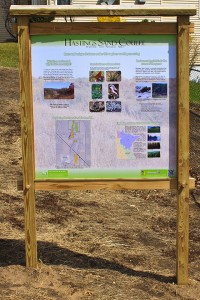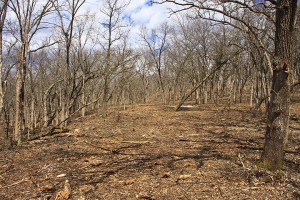Hastings Sand Coulee Scientific and Natural Area (SNA) was first designated in 2007 and greatly expanded in 2011. The Minnesota Biological Survey identified this site as “one of the most biologically important sites in Dakota County.” An unnamed intermittent stream, a tributary of the Vermillion River, runs through all three of the disconnected units of this SNA. The South Unit is a 79-acre dry prairie with scattered eastern redcedar. The North Unit is 178 acres and includes a more diverse mix of dry prairie, oak woodland, and former cropland being restored to prairie. The tiny, 6¾-acre Center Unit is an abandoned gravel pit. Seven state listed species have been seen on at least one of the units, including Lark Sparrow, regal fritillary, and kittentails. Ottoe Skipper, a threatened species, has also been reported here but has not been added to the county distribution map for the state.
The Friends of the Mississippi River has done considerable work restoring the site. This is especially apparent in the North Unit. Following decades of fire suppression, what had once been a hill prairie has become bur oak woodland with a dense shrub understory. Most of the shrub layer in this section was removed in December, 2013. A large area of former cropland has been reseeded with prairie grasses and forbs. In the South Unit much of the common buckthorn has been removed from the area along MN Highway 361.
Visitors this week (late May) to the South Unit will find more fringed puccoon in bloom than they may have seen anywhere else. Hairy puccoon and hoary puccoon are also blooming here. Other flowers blooming now include birdfoot violet, prairie violet, prairie blue-eyed grass, ground plum, cypress spurge, balsam groundsel, narrow-leaved hawkweed, and narrow-leaved hawk’s-beard. If you walk slowly and look close you will also find in bloom corn speedwell, hairy purslane speedwell, and long-leaved bluet. Resident birds are curious about the occasional visitor. If you bring your binoculars you will probably spot a western meadowlark and a lark sparrow. You will certainly hear field, clay-colored, and grasshopper sparrows. In the North Unit kitten-tails, violet wood sorrel, winter cress, downy phlox, and smooth yellow violet are all in bloom this week.
http://minnesotaseasons.com/Destinations/Hastings_Sand_Coulee_SNA.html





